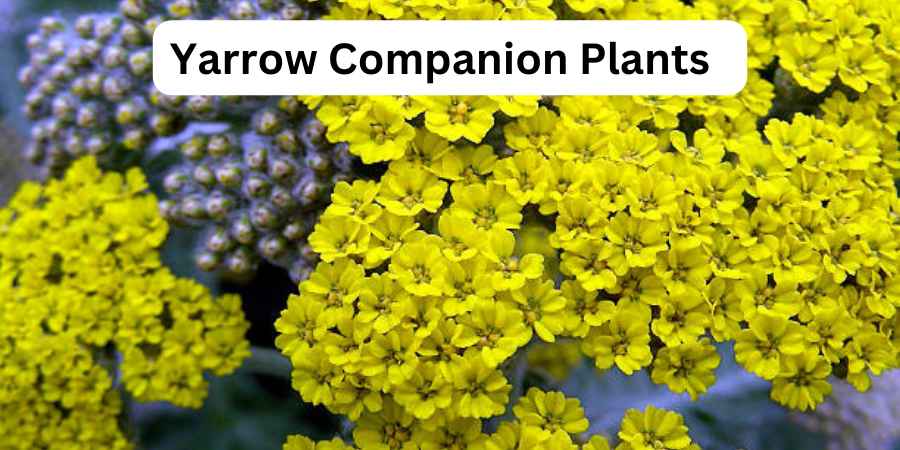Last Updated on June 3, 2025 by Jocelyn
Yarrow (Achillea millefolium) is a hardy, low-maintenance perennial that grows well in full sun and dry soil. It comes in shades of pink, red, white, and yellow, and is perfect for garden borders or meadow-style plantings.
Yarrow attracts beneficial insects like ladybugs and pollinators, helping control pests such as aphids and reducing the need for chemicals.
It grows well with herbs like rosemary, thyme, and lavender, and vegetables like tomatoes and carrots, but avoid planting near mint due to competition.
In my garden, yarrow adds beauty, connects spaces, and supports a healthier, more natural ecosystem.
Table of Contents
ToggleBenefits of Yarrow Companion Planting
Yarrow is an amazing plant to include in your garden. It not only looks pretty but also helps other plants grow better. Let’s explore the benefits of planting yarrow with other plants.
| Benefit | Explanation |
| Attracts Pollinators | Yarrow brings bees and butterflies, which help flowers and vegetables grow by spreading pollen. |
| Improves Soil Quality | Its deep roots bring nutrients from the soil to the surface, making the soil richer and healthier for other plants. |
| Pest Control | The smell of yarrow can scare away harmful insects, protecting your garden from pests. |
| Supports Growth | Yarrow helps nearby plants by providing shade and reducing competition for nutrients, making them grow stronger. |
Want to learn more about companion planting? Check out my other guides:
Best Yarrow Companion Plants
When planting yarrow in your garden, it’s helpful to know which plants make the best companions. Some plants can repel pests and damage, while others use their positive effects to increase soil nutrition and growth.
I recommend planting these plants next to yarrow for excellent results. Yarrow is a great companion plant that can be included with many plants for the best effects.
1. Tomatoes
Growing tomatoes with yarrow in your garden is a great idea. The dense foliage of the yarrow provides shade and helps conserve moisture around the tomato plants, which is very beneficial.
Yarrow can attract parasitic insects, like braconid wasps, that lay eggs in hornworms. These insects hatch and feed on the pests, reducing their population and protecting your tomatoes.
The structural support from tomatoes helps yarrow grow upright, while yarrow’s natural ability to attract pollinators can enhance your tomato yield. This unique partnership leads to a bountiful harvest for you to enjoy.

2. Peppers
Growing pepper plants next to yarrow in your garden is smart. The compact growth habit of peppers and their vibrant fruits thrive in the ideal environment created by yarrow’s foliage.
Yarrow helps regulate soil moisture and suppress weeds, making it easier for peppers to flourish. Plus, yarrow attracts beneficial insects like hoverflies, lacewings, and ladybugs that control aphids and other pests.
This dynamic pair enhances pollination and natural pest control, creating a balanced environment for peppers to grow well.
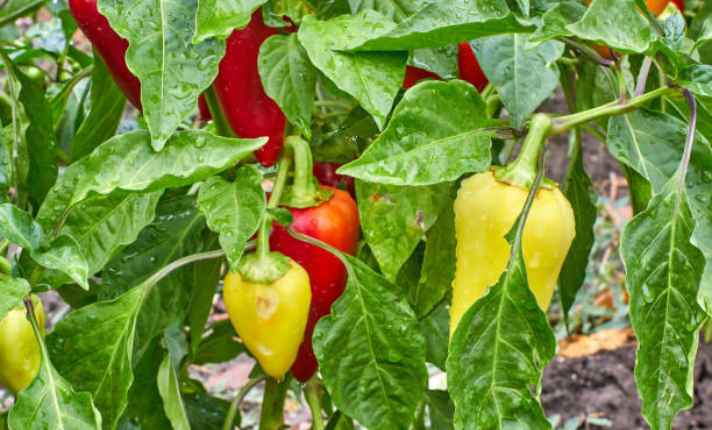
3. Cabbage
Cabbage is a wonderful companion plant for yarrow in the garden. The large leaves of cabbage provide shade and protection for the yarrow, helping to conserve moisture and reduce stress during hot weather.
In return, yarrow’s aromatic foliage acts as a natural repellent against pests and insects, deterring cabbage moths and other harmful larvae.
This mutual relationship between these plants is highly beneficial, making the garden more productive and reducing damage to the crops. Additionally, yarrows can attract parasitic predators that further protect the cabbage.

4. Chamomile
When I began gardening, I loved planting chamomile with yarrow. These plants from the Asteraceae family grow well together, creating a harmonious garden bed. Chamomile promotes overall health and resilience in yarrow, and its aromatic fragrance is amazing.
This inviting space attracts beneficial insects like hoverflies and essential pollinators. Their similar growth habits and soil requirements make them perfect companions, providing support and enjoyment for both humans and nature.
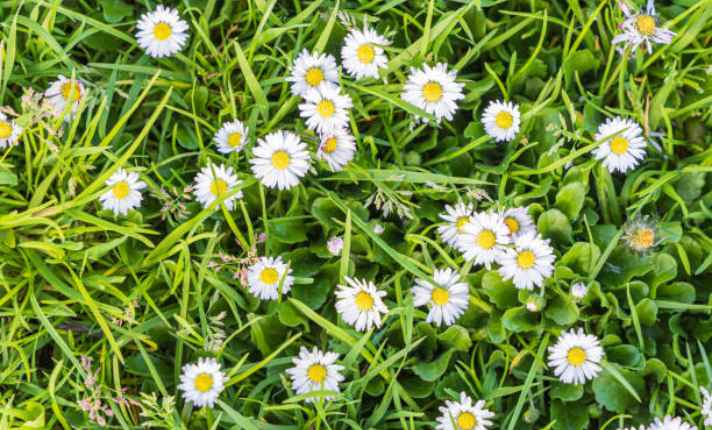
5. Oregano
In my garden, Oregano grows well in well-drained, sandy soil with a pH range of 6.0 to 8.0. It needs plenty of sunlight and occasional pruning to stay compact and dense.
This aromatic plant not only adds culinary value but also plays a crucial role in the garden ecosystem.
Its habit of spreading helps in suppressing weeds and conserving soil moisture. Oregano is great for protecting neighboring plants like Yarrow by repelling pests and attracting beneficial insects.
Together, they enhance the biodiversity and health of the garden.
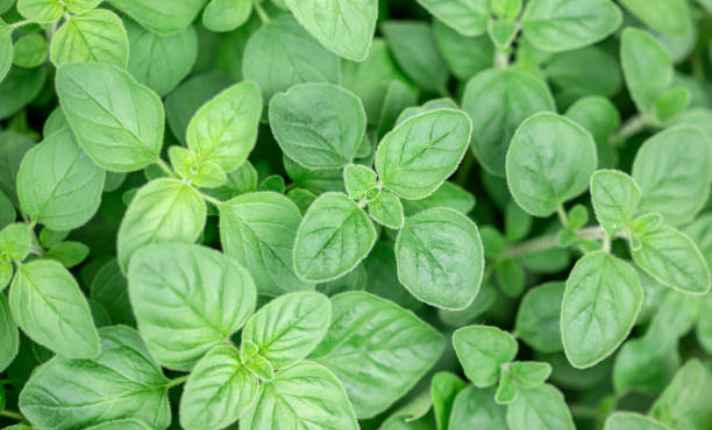
6. Thyme
Thyme is a wonderful herb to grow alongside yarrow in your garden. It thrives in sandy or loamy soil with a pH range of 6.0 to 8.0. Full sunlight and moderate moisture keep its compact growth and flavorful foliage healthy.
Thyme helps repel pests and attracts beneficial insects, protecting the yarrow from diseases. Its aromatic qualities create an inviting and vibrant space, while its low-growing habit and small, delicate leaves add texture and visual interest.
Together, these herbs enhance the overall biodiversity and healthy environment of your garden.
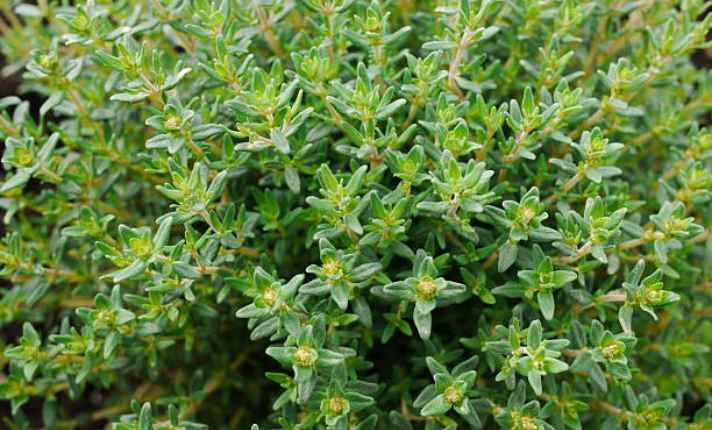
7. Basil
Planting basil with yarrow in your garden creates a vibrant, dynamic, and productive space. The lush green foliage of basil contrasts with yarrow and attracts beneficial insects for pollination and natural pest control.
This pairing not only enhances the aesthetic beauty of the garden but also nourishes the body with its aromatic and culinary benefits, adding flavor to your dishes.
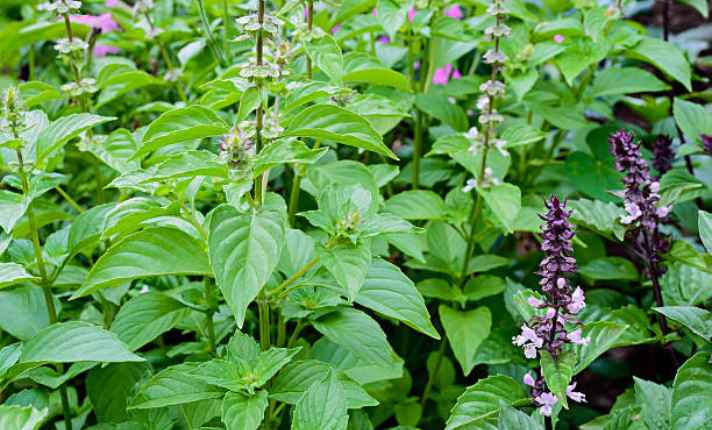
8. Echinacea (Coneflowers)
The feathery leaves of the yarrow create a soft backdrop that is visually inviting. Echinacea not only enhances the beauty of the landscape but also attracts insects like bees and butterflies which help pollinate the plants.
This interaction boosts the health and vitality of both echinacea and yarrow, making them resilient companions. Together, they offer a robust and functional garden ecosystem, full of medicinal properties and resilience.
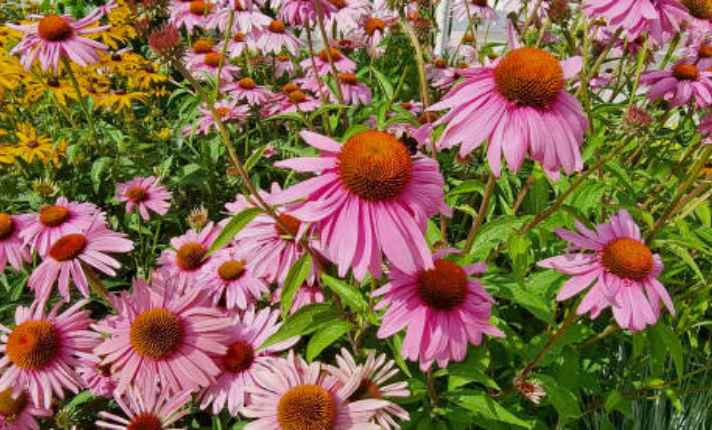
9. Bee Balm
Bee Balm, also known as Monarda, is a perfect companion for yarrow in the garden. Its vibrant flowers and aromatic foliage create a beautiful backdrop for the delicate blooms of yarrow.
In my own garden bed, the strong scent of Bee Balm helps deter pests, creating a harmonious and pest-resistant environment.
The color and fragrance of Bee Balm attract essential pollinators like hummingbirds, bees, and butterflies, making the garden alive with activity.
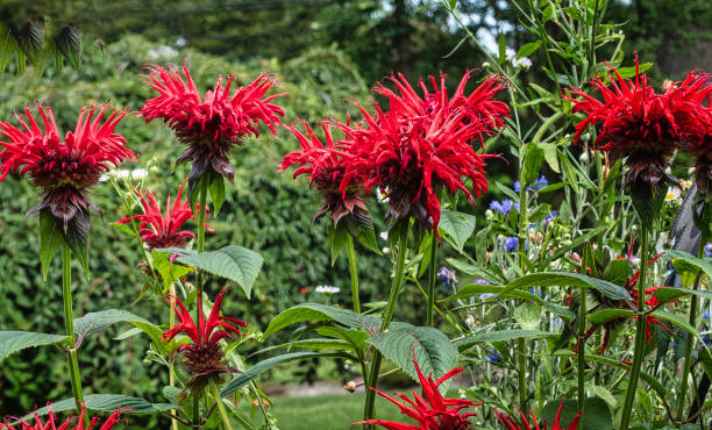
10. Salvia
Salvia and Yarrow make a great team in the garden. Salvia has tall, aromatic flowers that attract bees and butterflies, which are important pollinators.
The soft, feathery foliage of yarrow creates a beautiful backdrop for salvia’s spikes of blooms.
The strong scent of salvia can also help deter pests, adding a resistant layer to your garden environment.
Together, they form a visually stunning, vibrant, and attractive display, providing structure to the bed and creating a harmonious environment.
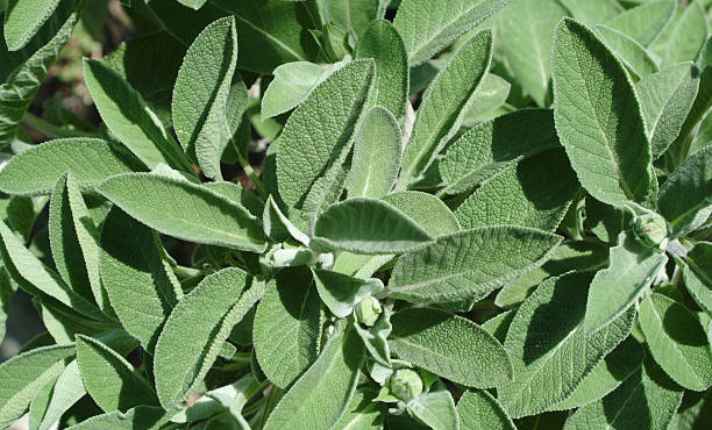
11. Rosemary
The fragrant foliage of rosemary added depth and complexity to the garden bed, while its aromatic qualities created a pleasant sensory experience.
Rosemary acted as a natural deterrent against pests, protecting the delicate flowers and feathery leaves of yarrow. This harmonious pairing promoted a peaceful environment that both humans and beneficial insects enjoyed.
The dynamic combination brought relaxation and enjoyment to my garden.

What Not to Plant With Yarrow
When growing yarrow, avoid planting it near low-light plants since yarrow loves the sun. Also, don’t place yarrow next to a tall shrub or tree that creates too much shade. Yarrow thrives in sunlight and low water conditions.
Be cautious of enemy plants that attract detrimental insects or consume too many nutrients and water. This can drastically impact Yarrow’s development.
Proper companion planting is essential to prevent these negative effects and keep your garden healthy.
1. Fennel
Fennel can negatively impact the growth of yarrow, making it a poor companion plant. When planted together, fennel may suppress yarrow’s development, leading to reduced health and vigor.
To ensure both plants thrive, it’s best to keep fennel and yarrow separated in your garden.

2. Common Sage
Common sage and yarrow share similar growing conditions, but yarrow’s invasive nature can overshadow and compete with sage. While they can attract beneficial insects, careful management is required to prevent yarrow from outcompeting sage.
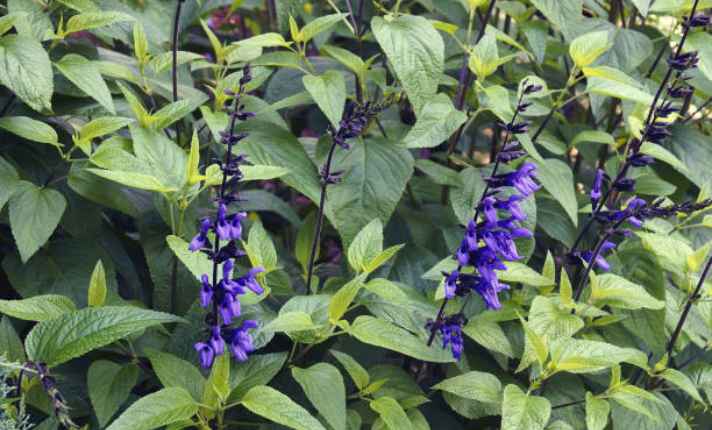
3. Cucumber
Cucumbers should not be planted near yarrow because both are susceptible to powdery mildew which can easily spread between them, leading to fungal infections.
Additionally, yarrow can grow tall and shade out cucumber plants, causing stunted growth and increasing the risk of disease.

5 Tips for Planting Yarrow
Planting yarrows not only adds beauty to your garden but also helps attract beneficial insects. Here are some essential tips to ensure your yarrow thrives and complements other plants in your garden.
Choosing the Right Location
Gardening with yarrow is enjoyable and simple. To start, choose a location that receives plenty of sunlight. Yarrow thrives in soil that is slightly alkaline and well-drained. If your soil is too acidic, you can add lime to balance the pH.
Preparing the Soil
Proper soil preparation is key. Enrich the soil with compost or organic matter to provide nutrients. Well-drained soil is essential, so ensure it’s not too heavy or waterlogged.
Planting Yarrow
You can plant yarrow using either seeds or transplants. If you choose seeds, plant them in the spring or fall. For transplants, space them 12 to 24 inches apart to give them room to grow.
Watering and Mulching
Water the yarrow deeply after planting, but avoid overwatering to prevent wet feet. Applying a layer of mulch around the plants helps retain moisture and suppress weeds.
Pruning and Maintenance
Yarrow requires minimal pruning. However, deadheading spent blooms encourages more flowers. In the fall, cut back the plant to the ground to prepare it for winter.
FAQ’s
Q: Where Should I Plant Yarrow in My Garden?
A: To ensure yarrow grows well, plant it in a location with full sun. While it can survive in part sun, it will produce fewer flowers.
Yarrow plants do best in high heat but struggle with high humidity. Ensure they have space to open up and hold up well, particularly in challenging conditions.
Q: Can You Plant Yarrow and Echinacea Together?
A: Yes, planting yarrow and echinacea together in your garden is a great idea. They have similar growth habits and make excellent companions.
This pair improves soil quality and attracts pollinators, creating a beneficial ecosystem. Plus, they make your garden look beautiful and help it thrive.
Q: What Insects Does Yarrow Repel?
A: Yarrow is a favorite garden plant because its natural oils act as strong repellents. By dotting yarrow among your flowers, you can drop the mosquito and other flying insect population overnight.
It’s even known to be stronger than DEET in tinctures.
Q: How Much Space Does Yarrow Need?
A: When planting Yarrow, make sure to space transplants about 30-60cm (12-24″) apart. Yarrow is a tough plant that can adapt to various soil types, making it suitable for xeriscaping.
For the best results, grow Yarrow in loamy, well-drained soil with a pH of 5.5 to 7.0. It’s a good idea to divide the plants every 3-4 years to keep them healthy.
Q: Can Yarrow Grow in Pots?
A: Yarrow (Achillea millefolium) is perfect for growing in pots. As a member of the daisy family, Yarrow thrives in containers. I love how Achillea brightens up my patio Pot. Plant it in a sunny spot, and enjoy its beauty.
Conclusion
Yarrow is an excellent companion plant. It attracts ladybugs, hoverflies, and lacewings. These insects help control pests in your garden. This creates a healthy ecosystem.
Yarrow also improves soil quality. It promotes plant growth without synthetic fertilizers. This method reduces harmful chemicals and supports diverse plants and insects.
To enjoy a natural and beautiful garden, consider planting yarrow. It’s easy to grow and maintain. You’ll create a balanced environment. Start using yarrow today for a flourishing garden.
Discover the benefits of yarrow now!
